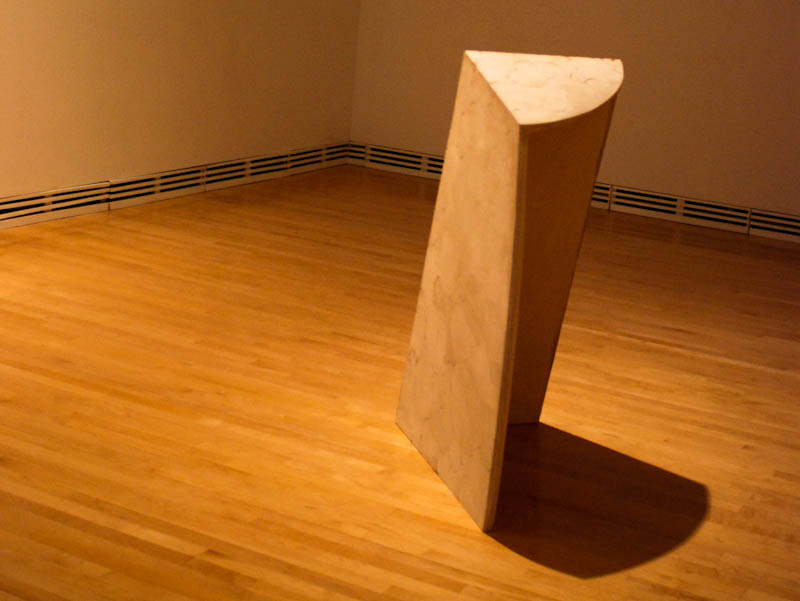
Erin Shirreff’s exhibition at the Carleton University Art Gallery isn’t just shedding light on her artistic process, but also on how people view the world.
Available Light, which opened Feb. 13 and will be running until April 22, is a collection of Shirreff’s sculptures, photographs and silent films. The pieces in the exhibition are plain objects brought to life by light, Shirreff said.
The title, Available Light, is a play on the term in photography describing the natural light that photographers work with.
“The exhibition shows the mediation of experience,” the New York-based artist said. “Available Light is a metaphor of how fundamentally experience is limited but we do what we can with what is available.”
In the same way, she said although her works are on “the verge of abstractness,” they’re still inspired by concrete objects.
A still image, “UN 2010,” hangs on the white walls of the gallery. It shows a cityscape, which appears to be changing from sunrise to nightfall.
“The United Nations building is the view I see outside my window and I took hundreds of photos of the landscape over a course of a month,” Shirreff said.
She printed five of those photos and retook them under different lighting to create an illusion of dawn and nightfall, she said.
Like the still images, the sculptures are also dependent on light.
The shadows cast by the sculptures complete the image, Shirreff said. The shadow and light help the viewer notice the artificial nature of the image, she said.
For example, Monograph (no. 1), is a series of images that merge two different objects together, making them seem unified and whole. Under closer inspection, the viewer can see that it’s two similar images.
“Sculpture is different from photography because it is in the present. You’re sharing space with it,” Shirreff said, adding that the pieces can still convey a passage of time.
She said she built the sculptures out of ash to tie in remnants of the past while using sharp angles to modernize them.
The objects may seem common, but when the light hits them in a certain way, they change completely from the “banal” to the “extrordinary,” wrote curator Sandra Dyck in an opening panel.
“There is a constant dialogue in Sherriff’s work between the thing itself and the photographic representation,” Dyck wrote.
Shirreff said she lets the artworks speak for themselves. She didn’t name the sculptures on purpose because she said she wanted to emphasize that one can never be quite sure what the object is.
“I wanted to create an object that makes you aware of the object itself,” Shirreff said. “I wanted it to be something you can just be with.”





